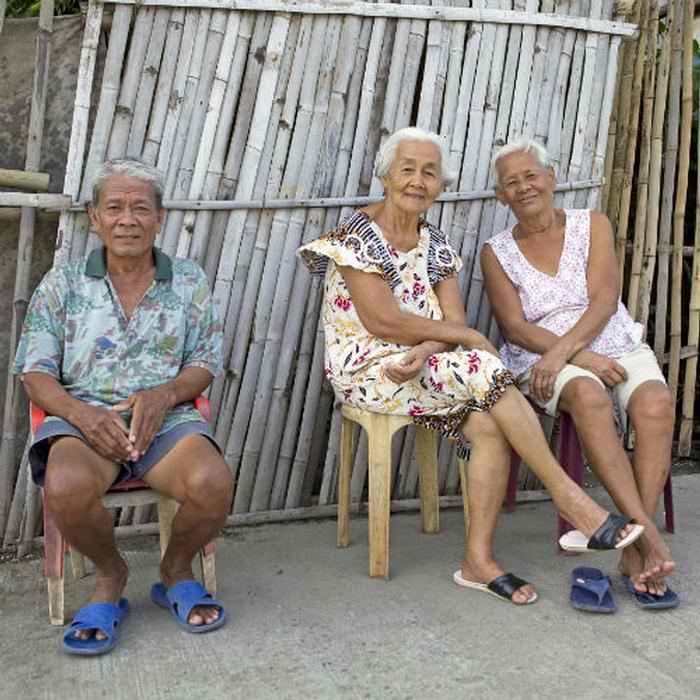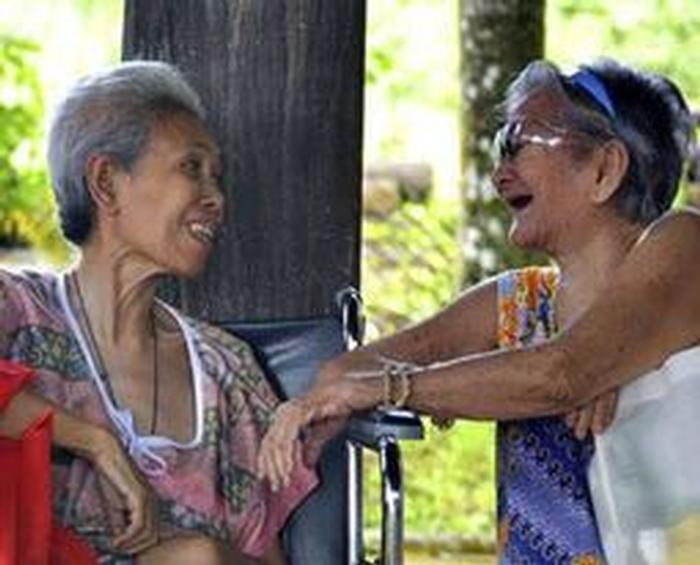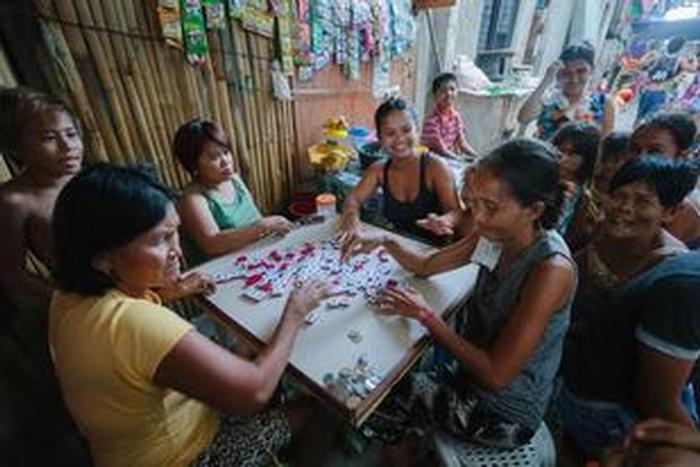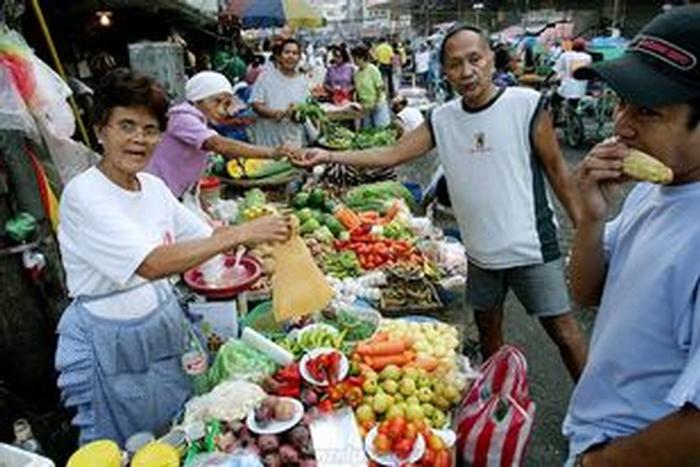[ID:4802] Espasyo: The Filipino Wisdom of NecessitiesPhilippines Espasyo: The Filipino Wisdom of Necessities
“As architects, our purest ability is to be able to reproduce elements of successful precedents. Most critical to this process is for the architect to observe, to listen and to ask.”
- Jan Doroteo (2017 Berkeley Prize Winner)
Once upon a time on a house 15 years ago, there we are as children listening to our lolos and lolas about the things from their youth. Narrating the hardships, the lessons they learned and also telling us the traditional folklores that used to both scare and fascinate us. Now, we could only imagine how much of what they taught us are also from their own grandparents. It is incredible how the wisdom embedded within hundreds of years’ worth of stories and teachings are passed through time. Since pre-colonial Philippines, elderlies have been heralded as key members of the society. As beacons of wisdom, they are reflections of Filipino values that are passed down to the younger generation.
In many ways, describing us Filipinos in our optimistic light is easy. With our hospitable nature and the resourcefulness rooted in our wisdom of necessities. Filipino elderlies thrive on making the most out of limited resources. But the bitter truth that faces the aging community is that, outside the occasional government financial subsidies, there is no concrete solution that honors their need for continuing an active living dynamic. With the problems that come with aging, how can the country evolve to cater to their special needs?
The Customs
Growing up, we are taught to view aging as a sign of dignity. We show our respect through simple Filipino ideals of saying "po" and "opo" alongside the gesture of "mano po," taking the older relative's hand and placing it on our own forehead. We recognize that our elders are marks of wisdom that we must emulate. The vibrant dynamics that exist between old and new generations are still observable today. Personally, having experienced living with an elderly, we are accustomed to their lifestyle. Waking up before everyone else, hearing the rustle of the walis tingting as they clean the front yard in the morning. Then in the afternoon, they’d meet with their friends and share stories. Within these years, we both observed that their daily activities served a deeper purpose. Our elderlies have claimed spaces for them to develop a routine and to express themselves as part of the community.
The Problem
As the older population gets older, public efforts have been increasingly becoming juvenile. As a developing country, there has been insufficient upkeep for these members of the community. Thus, resulting in a lower quality of life for our "lolos" and "lolas."
The major issues they face are related to accessibility and public transportation, as well as lack of inclusive spaces where they can collectively socialize. These stem from the factors of their social life, safety, security, learning, and well-being. Though there are communal spaces for all residents, such as shopping malls, courts, and active parks, these places are mostly inappropriate and unfunctional for senior citizens. These places are often too crowded, and the activities may be too strenuous or complicated for the elderly. Furthermore, they may not offer any amenities that cater to the specific needs of seniors, such as seating areas or ramps. As a result, senior citizens feel excluded and unable to access these communal spaces due to their age and physical limitations. Elderlies are considered artifacts of past that one may learn a lot from, but the fragility of their existence pushes them to be isolated from the many.
These issues set a precedent that, in order for elderlies to feel secure in their old age, the design provisions of assisted living facilities are needed. The growing aging community needs a space that sets off a conversation about how we can value them better. Showcasing their individuality through a design that sets thoughtful parameters for a rich dialogue about the beauty of growing old in the Philippines. By providing better amenities rooted in simple values, we could make our lolos and lolas feel safer and better cared for.
The SILYA, the SARI-SARI STORE, and the TALIPAPA
Walking along the streets of our rural barangay, it’s a common sight to see people gather around corners busking about the latest news in the community. Especially in the afternoon, after all works and chores are done, people come out of their homes to start lively rounds of conversations showcasing the vibrant Filipino living. Blending among these multitude of people are the Filipino elderlies simply enjoying what the day offered them through a simple conversation with other people.
Mobility in the community is essential for the aging community because it allows them to maintain their independence and engage in physical activities on their own. Given their frail bodies, they still long for meaningful social interaction. But with the lack of clear solutions from organized institutions, a proper space remains blurred to realization. Interestingly enough, the best design responses come from the elderlies themselves. As observed from the images provided, a simple 'silya' and sun shade are already enough materials to support their social activities. The use of makeshift tables for their daily round of 'tong-its' and their other ingenuities are testaments to how our elderlies utilize minimal resources to cater to their needs. Wherever there is a gap, it will be filled out of necessity. Filipinos are rooted in human interaction, and elderlies are mostly found in places that has a great value to the Filipino culture, such as the sari-sari store. Sari-sari means variety, thus a sari- sari store offers a sundry of products which usually have everything a ‘barangay’ need. And even without buying anything, elderlies stay at these places, make conversations, because a sari-sari store evokes a strong Filipino spirit entrenched to the simplicity of necessitation.
On a matter of transportation, tricycles are the primary mode of transportation in every barangay. Tricycles are known as the beast of burden because they are cheap and efficient. We Filipinos, particularly the elderly, use it to travel to the 'talipapa' or market, which often serves as a playground for the elderly not just to buy goods but also establish connections as a 'suki' or a loyal buyer. Following these sentiments, it is puzzling why local communities in the Philippines continue to lack facilities.
This statement speaks to the creativity and resourcefulness of the elderly in the Philippines. Despite having minimal resources, they are able to create communal spaces that serve their needs. This is a reminder to local communities in the Philippines that more action needs to be done to provide resources that better meet with the elderly. There needs to be more investment in facilities and amenities that allow them to socialize and engage in activities that bring them joy, rather than just relying on makeshift solutions indefinitely. Recognizing their creativity and resourcefulness can help communities develop better services and facilities that can be tailored to their type of living.
A Case Study
On December 9, 2022, the Franciscan Sisters of the Immaculate Conception in our local municipality wrote to us, requesting an assistance in designing a one-story multi-purpose building for Eucharistic Celebrations, retreats, recollection, conferences, and as a house for the Sisters. For 93 years, Our Sister's Convent was the first Congregation in the Philippines, having been founded in 1929. However, because of the convent's venerability, it has deteriorated and has been infested by termites.
Conducting an ocular visit, we were greeted by two Sisters in their late 80s. When they shook our hands, it reminded us of our own lolas, who had the same silver hair, soft hands, and sweet voice. Upon entering the convent, they told us about their daily routine and how, like most elderlies, enjoyed doing chores on a daily basis. In their spare time they would go outside to chat with their neighbors, expressing how an active lifestyle is important.
They also explained their preference for a one-story building because the existing chapel’s 2nd floor is mostly unusable to them. The imposing stairs make the chapel hard to thread in which most of them fall trying. Reflecting the wisdom of necessities, the Sisters then relocated all of their function rooms and chapel to the first floor of the building and merged their reflectory area, dining area, and receiving area into one space. This creates an open plan where the Sisters can move much more freely without the obstacle of going up the stairs or moving through too much things. Visiting the Sisters, we realized how important mobility and the ability to meet daily needs are for the elderly. Focusing on their necessities in a more intimate space is the key instrument critical to their free flow of movement.
Architecture for the Aging Filipinos
Why do Filipino elderlies love to go to the busy markets, to their neighbors, to places generally? That even in old age, they find the energy to somehow see people? It is not because of the task of accomplishing something but rather the social connection they want to experience. Seeing this reason, we don’t need to confine them to make their lives longer; we just need to create better communities for them to continue finding the joy in living. Through design, the plethora of their underutilized resourceful ideas could be the basis for their optimal living dynamics. Keeping the elderly healthy and active as a necessity and not as a luxury.
As future architects, we have a lot to offer, but this ability comes with the great understanding to whom the design is for- the elders. The best design responses sprang from their desire for space; a response that is easy, small-scale and simply them. Their agency to devise their own solution is an inspiration for an architecture that is grounded to what works best. Instead of devising a new typology and seeing elderlies as another demographic that needs isolation, architects need to see the underlying reason for their ingenuity-- to belong.
Ironically, the larger role of architects lies within the elderlies’ small-scale design patterns. This can be majorly adapted to projects of (1) Residential, (2) Transportation and (3) Public spaces. In residential, architects need to consider that the house should grow old with the users. Observing that our lolos and lolas doesn’t want to be cooped up, the consideration of large porch alongside the integration of an open area should be considered. In cases of a second story housing, it’s preferred to have all the amenities available in the first floor. Aside from residential, architects have a role in (2) transportation, architects provide static shelter for the people's constant kinetic structure thus allowing more transportation alternative for the community and provides more access and mobility for the elderlies. (3) The streets and public spaces are where a community’s soul resides and where the elderlies spend most of their time, architects develop spaces such as markets and parks and the community as a whole, which are functional for the aging community. The opportunities provided by these spaces for interaction are what defines the community.
The Wisdom of Necessities
Architecture for the aging is more than the provision of standardized design, it’s more than the forethought of creating a new typology, but about understanding of the creation of space. Whether in public policy or directly in the physical environment. Architects can work at both the macro and micro scales of cities and dwellings brought about the Filipino wisdom of necessity.
As Jan Doroteo beautifully puts it, “Smallness is expedient, smallness is intimate, smallness is intense, and smallness represents one piece of a larger whole.” The wisdom of necessities, however small carries a lot of weight to the culture of Filipinos. It pushed us to be creative in solving the gaps of our needs. In architecture, this smallness will be the basis of understanding, of design, of people. Once upon a time on a house 15 years ago, as small children, our elderlies taught us to be bigger than life. With newfound perspective, we found a new facet on why we design, on why we create. Architecture is about experience, when the needs of the users are the forefront of the design, architecture becomes the creation of positive and profound experiences for the people. Architecture is there to remind and guide us to be distinct, grounded, and truly us- Truly Filipino.
References:
Doroteo, J. (2017). The Little Pinoy Sari-Sari Store: Of Otherness and Belonging in a Global Diaspora. http://berkeleyprize.org/competition/essay/2017/winning-essays/jan-doroteo-essay
Carlos, C. (1999). Concerns of the Elderly in the Philippines. https://journals.upd.edu.ph/index.php/pssr/article/viewFile/1279/1616.
If you would like to contact this author, please send a request to info@berkeleyprize.org. |




